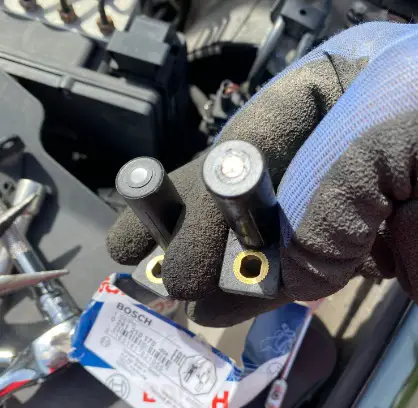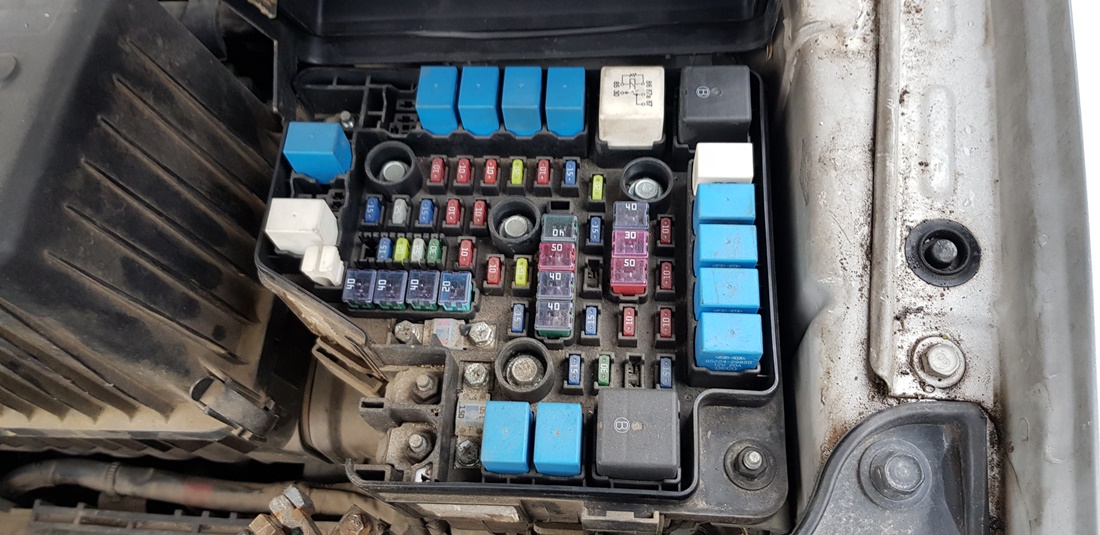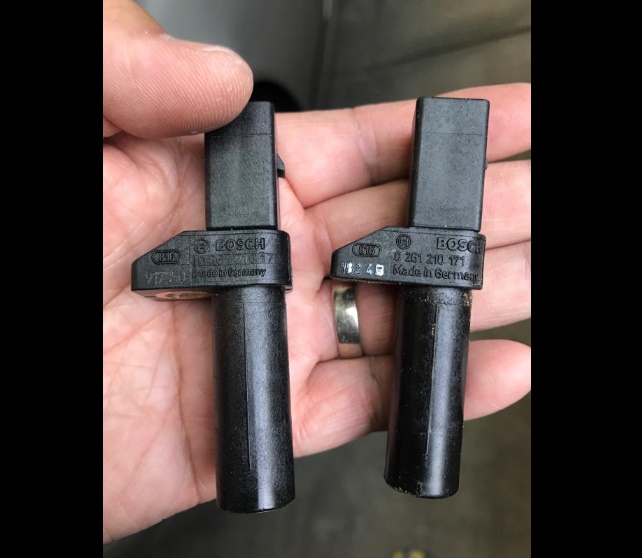If your idle air control valve gets clogged with carbon buildup, your car will have a very poor idle. This has happened to me before. I will tell you right away, you don’t have to be a mechanic to clean your air control valve.
I will guide you through the steps on how to clean your idle air control valve without removing it. Let’s talk more about the idle air control valve and what it does.
- Key Takeaway
- What Is The Purpose of Idle Air Control Valve In Cars
- How To Clean Idle Air Control Valve Without Removing It
- 1. Prepare the working area
- 2. Locate the idle air control valve
- 3. Remove the filter box and the air duct
- 4. Disconnect the clamps that connect the air duct to the throttle body
- 5. Locate the passage to the idle air control valve
- 6. Spray the hole with throttle body cleaner
- 7. Reconnect all of the components
- Word of caution
- How Often Should You Clean The Idle Air Control Valve?
- Signs That Idle Air Control Valve Needs Cleaning
- What Causes an Idle Air Control Valve To Become Dirty
- Can You Drive With a Dirty Idle Air Control Valve
- FAQs
- Q: How does the idle air control valve work?
- Q: What are the symptoms of a bad idle air control valve?
- Q: How can I clean the idle air control valve without removing it?
- Q: Where is the idle air control valve located?
- Q: How do I locate the idle air control valve?
- Q: Can I clean the idle air control valve with a multimeter?
- Q: Can a clogged idle air control valve cause issues with the idle?
- Q: Do I need to disconnect the battery before cleaning the idle air control valve?
- Q: Is it possible to test an idle air control valve with a multimeter?
- In Conclusion
Key Takeaway
- The purpose of the idle air control valve in cars is to manage and maintain the engine’s idle speed by regulating the amount of air flowing into the engine when the throttle is closed.
- To clean the idle air control valve without removing it, you need to spray a carburetor cleaner into the valve, then use a soft wire brush or clean rag to remove any dirt, grime, varnish, or gum that may have accumulated.
What Is The Purpose of Idle Air Control Valve In Cars
The idle air control valve has a mission to allow air to bypass your throttle plate at idle. When you press the gas pedal, you open up the throttle plate and allow air from your air filter box to enter the engine.
But at idle, with the throttle plate closed, there is a bypass which is going to allow air to go from the front side of the throttle plate when the throttle plate is closed and travel to the backside of the throttle plate and come out and enter your engine.
The job of your idle air control valve is to open up a valve that will allow air to only go through the bypass at idle. If this valve fails completely, you’ll have a really hard time starting your car or idling would be really rough.
If the valve doesn’t fail but the passage gets clogged up with carbon buildup, then you also have very poor idle. In fact, you’ll like more likely to have a very low idling car.
How To Clean Idle Air Control Valve Without Removing It
- Make sure that the engine is cold before working on it.
- Locate the idle air control valve by following the air duct past the MAF sensor that goes into the throttle body. The IAC valve is attached to the throttle body.
- Remove the filter box by disconnecting the clamps to gain access to the IAC valve.
- Expose the throttle body by removing the air duct.
- Look at the throttle body and locate the idle air control valve. It is a small opening in front of the throttle plate.
- Spray the throttle body cleaner inside the IAC valve and clean it with a soft wire brush.
- Reconnect the air duct and filter box.
1. Prepare the working area
Before I show you how to clean your idle air control valve without removing it, you have to prepare your working area. It may sound not important, but please only work when the engine is cold.
It has happened so many times to me. I have a lot of scars on my hands from working on a hot engine. Also, if you have a pair of gloves and safety glasses, please put them on.
2. Locate the idle air control valve

If you haven’t cleaned an idle air control valve before, you might have a hard time locating it. Start from the filter box and work your way up. The filter box is a large box that holds the air filter.
Once you locate the air filter box, follow the duct past the mass airflow sensor (MAF) as it goes deep into the engine. You will then reach the throttle body and the idle air control valve. Depending on your car’s make and model, the idle air control valve is almost always attached to the throttle body.
3. Remove the filter box and the air duct

In order to disconnect the filter box, you will have to disconnect the clamps that are holding the filter box. Next, if your vehicle has a MAF sensor, disconnect the wiring that goes into the MAF sensor.
Then, you want to remove all vacuum lines that are connected to this air duct. Make sure to remove the PCV hose that is connected to the big air duct.
4. Disconnect the clamps that connect the air duct to the throttle body
Undo the clamp that’s holding the air hose to the throttle body by unscrewing the screws and disconnecting the clamps. Then, pull out the air hose and store it safely with all of the screws that you have just removed.
At this point, you should have an exposed air filter and an exposed throttle body. When you get to this point, there is something that can also cause a rough idle and that is a dirty air filter.
If you have a dirty or partially clogged air filter, that’s going to restrict the amount of air that’s getting inside your engine. This is going to be more noticeable at idle.
5. Locate the passage to the idle air control valve

With your throttle body exposed, you will be able to see a small ”hole” or passage that is located on the inside of the throttle body. This ”hole” or passage allows the air to bypass the air duct into the engine when your car is idle. Inspect the hole and see if it has visible carbon build-up or something that may restrict the airflow.
6. Spray the hole with throttle body cleaner

Get yourself some throttle body cleaner. It doesn’t have to be fancy. The one that I am using is listed on amazon.com (see the price of throttle body cleaner here). Then with a plastic wire brush, clean the passage or passages even more. I got this cool plastic wire brush on amazon.com. The reason why I went for a plastic wire brush instead of a standard wire brush is that I don’t want to damage the passages or the throttle body.
7. Reconnect all of the components
After we clean everything up it’s time to put everything back together. The reconnecting part is going to be a reversal of removal. Just make sure that you don’t skip any steps. Reconnect one side of the air hose to the throttle body and secure it with screws and clamps. Then re-attach the airbox and re-attach the PCV hose and the vacuum hoses that you previously removed.
Word of caution
If you have a car that has an electronically operated throttle body plate, please make sure that you do not move the throttle body plate while cleaning the idle air control valve.
The reason for this is if you touch the plate and move it around with your hand, you’re going to throw off the calibration. In order to reset that, you’re going to have to go to a dealer or a mechanic shop and that’s going to cost you money says Cars From Japan.
How Often Should You Clean The Idle Air Control Valve?
It is recommended to clean the idle air control valve every 30,000 to 50,000 miles.
Regular inspections during routine vehicle maintenance can also help identify if cleaning is needed sooner.
Signs That Idle Air Control Valve Needs Cleaning
- The engine’s idle speed is too high or too low.
- The vehicle stalls frequently when idling.
- The car experiences irregular or erratic idling.
- The vehicle fails to idle immediately after starting.
- The check engine light comes on.
- Poor fuel efficiency.
- Difficulty in starting the vehicle.
- Unusual or rough noises from the engine during idle.
- Sudden surges in engine speed while driving.
What Causes an Idle Air Control Valve To Become Dirty
- Regular wear and tear: Over time, the idle air control valve can accumulate dirt and grime from the engine’s operation.
- Poor quality fuel: Low-quality or contaminated fuel can leave residues that may clog the valve.
- Infrequent servicing: Not servicing your vehicle regularly can lead to a build-up of dirt in various parts, including the idle air control valve.
- Dirty air filters: If the air filter is not clean, it can allow dirt and debris to reach the idle air control valve.
- Oil leaks: If there are oil leaks in the engine, the oil can contaminate the idle air control valve.
- Carbon deposits: The combustion process can leave carbon deposits that may dirty the valve over time.
- Driving in dusty conditions: If you frequently drive in dusty or dirty conditions, more debris can get into the engine and potentially clog the idle air control valve.
Can You Drive With a Dirty Idle Air Control Valve

Driving with a dirty idle air control valve is not recommended as it can have a negative impact on your car’s performance. Your car’s fuel-air mixture will be compromised, resulting in poor acceleration and rough idle. You also risk having increased emissions and increased fuel usage, which can lead to higher gas bills.
The idle air control (IAC) valve is an important part of the engine system. This small device helps to regulate the amount of air entering the engine while it is idle, which maintains a consistent engine RPM regardless of changes in load or outside temperature. The IACV also helps to reduce emissions by allowing the right amount of air and fuel to be mixed together.
When an IACV is dirty or doesn’t properly adjust itself, the Engine Control Unit will not be able to manage the air and fuel flow balance as effectively as it should, leading to reduced acceleration responsiveness, difficulty starting the vehicle engine, jerky idling, and a higher-than-normal fuel economy rate.
Additionally, since dirt particles can easily build up in the valve over time and can cause irreparable damage if left unchecked for a prolonged period of time, car owners should take their vehicles for regular service checks to verify whether their IACV is functioning optimally.
FAQs
Q: How does the idle air control valve work?
A: The idle air control valve works by adjusting the amount of air that bypasses the throttle plate. This helps maintain a consistent and stable idle speed for the engine, especially during idle or during deceleration.
Q: What are the symptoms of a bad idle air control valve?
A: Some common symptoms of a bad idle air control valve include rough idle, unstable idle speed, fluctuating RPMs, stalling at idle, and even surging or erratic engine behavior.
Q: How can I clean the idle air control valve without removing it?
A: Cleaning the idle air control valve without removing it can be done by using a carburetor cleaner or throttle body cleaner. You can spray the cleaner onto the valve and use a brush to gently scrub off any built-up carbon or debris.
Q: Where is the idle air control valve located?
A: The idle air control valve is usually located near the throttle body, which is responsible for regulating the airflow into the engine.
Q: How do I locate the idle air control valve?
A: To locate the idle air control valve, you can refer to your vehicle’s service manual or consult online resources. In most cases, it is placed on or near the throttle body.
Q: Can I clean the idle air control valve with a multimeter?
A: No, cleaning the idle air control valve cannot be done with a multimeter. It requires physical cleaning using carburetor cleaner or throttle body cleaner.
Q: Can a clogged idle air control valve cause issues with the idle?
A: Yes, a clogged idle air control valve can cause issues with the idle. When the valve is clogged, it may not be able to regulate the airflow properly, resulting in rough idle or unstable idle speed.
Q: Do I need to disconnect the battery before cleaning the idle air control valve?
A: It is generally recommended to disconnect the battery before cleaning the idle air control valve to prevent any electrical damage or accidental starting of the engine.
Q: Is it possible to test an idle air control valve with a multimeter?
A: Yes, it is possible to test an idle air control valve with a multimeter. This can help determine if the valve is functioning properly or if it needs to be replaced.
In Conclusion
Cleaning the idle air control valve without removing it is a straightforward process that can be accomplished using a few simple steps.
The procedure requires the use of a carburetor cleaner or a similar product to remove any dirt, debris, grime, varnish, or gum that might have accumulated in the valve.
It’s important to properly clean around the valve with a clean rag or compressed air before starting, to prevent further contamination.




